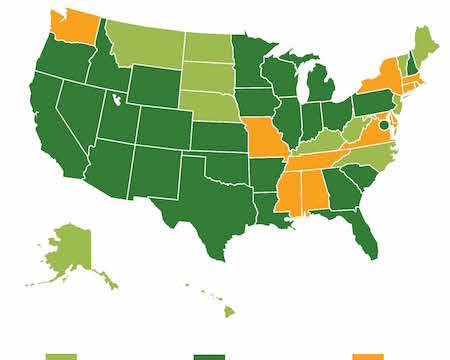California’s charter school movement is a story of possibility. Of collective commitment to improve charter performance for the sake of tens of thousands of students. A movement strengthened by all types of charter schools improving and our most vulnerable students learning. It is a story of collective courage, of teachers and school leaders coming together to hold each other accountable. And, it is a story that evokes a sense of hope. Not just hope that it is in fact possible to improve performance across a charter sector as vast as California’s, during a time of explosive growth and a severe funding crisis that disproportionately impacted California’s charter schools. But hope that similar success is possible just about anywhere in the country.
The California Charter Schools Association (CCSA) just released our 4th annual Portrait of the Movement: Five Year Retrospective – A Charter Sector Growing in Numbers and Strength report which covers what has happened in California’s charter school movement over the past five years, why it happened, and what can be done to ensure continued growth and momentum. Bottom line? Trends tell us that tens of thousands of students are being educated in better performing charter schools than just five years ago.
When CCSA released our first Portrait of the Movement in February 2011, we presented an image that introduced “the Shape of the U,” a graph depicting the distribution of academic performance for charter schools across the state.
“The Shape of the U” showed that in the 2007-08 school year, controlling for demographics of students served, approximately 21% of California charter schools were performing in the bottom tenth of all public schools in the state, with another 21% in the top tenth, and strikingly few “in the middle.” While charters had evolved to produce a substantial number of schools generating far higher levels of students learning than was found anywhere else in the traditional public school landscape, the charter school movement was simultaneously allowing an unacceptable number of chronically underperforming schools to persist.
This was a wake-up call for our movement that fueled action, resulting in a much different picture today. Just five years since we first presented ‘the Shape of the U’ concept, we see that California has significantly reduced by approximately one third the percentage of charters performing in the bottom tenth percentile, and has held nearly constant the large percentage of charters performing very well in the top tenth.
Charter schools are also having unprecedented success with historically underserved students. Students at charter schools serving low-income populations are far more likely than their traditional public school counterparts to be educated in a school that is among the top five or ten percent of all public schools statewide.
More than half of the students (52 percent) attending charters serving a majority high poverty population attend charter schools that are in the top quartile of all public schools statewide, compared to only 26 percent of similar students attending traditional public schools. To put this into perspective, these 78,000 charter students – enrolled in top quartile charters – would make up the fourth largest school district in California and the 42nd largest district in the nation. And more than a quarter of all English learners, African American, and Latino charter students attend charter schools that are among the most outperforming schools in California. Students at charters serving a majority of historically disadvantaged students are likely to be among the most outperforming schools in the state – three times more likely to be in the top tenth percentile and 5-6 times more likely to be in the 5th percentile.
This is a high-stakes moment for the broader charter schools movement. Nationally, we are going through a once-in-a-generation shift in our public school accountability systems as we transition to the Common Core State Standards.
We must be able to tell the story of how gains are being made in communities served by charters. CCSA plans to use every tool at our disposal to ensure parents and the public understand how California charter schools are performing. Other states across the nation will also need to consider how they are going to measure and show charter success in coming years.
The public has never been more supportive of charter schools, as evidenced by growth in charter school enrollment (California now serves a half million public school students), waiting list numbers (over 90,000 kids are on waitlists), and polling data. This support grows as charters are held more accountable than traditional public schools, and as they continue to strengthen academic performance especially among historically underserved students.
So what is the fundamental charter school recipe that has worked in California for decades? A collective commitment to serve each and every student and a dedication to improve charter school performance.
— Jed Wallace
Jed Wallace is the president and CEO of the California Charter Schools Association, a membership organization supporting the state’s 1,130 charter schools serving more than 514,000 students as of 2013-14.



